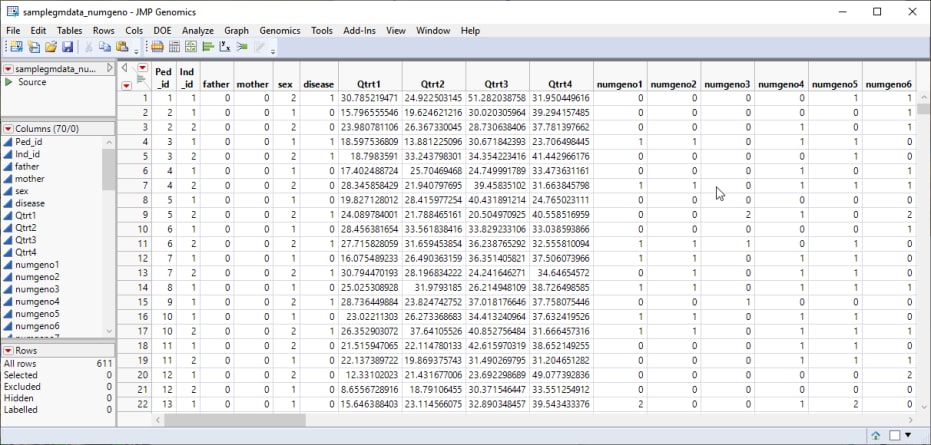Process Description
Radial Basis Machine
The Radial Basis Machine (RBM) is one of a series of predictive modeling processes provided by JMP Clinical and JMP Genomics to help you make the best predictions for your system based on the data that you have collected and analyzed. Although RBM is currently unable to make multiple class predictions, it is able to handle either binary or continuous dependent variables. It is also useful for discriminating groups that are separated by irregular borders. Whereas certain models, such as Discriminant Analysis, are useful for discerning groups based on simple linear (Discriminant Analysis, linear metric), parabolic (Discriminant Analysis, quadratic metric) or S-shaped (Logistic Regression) boundaries, the RBM can discern groups separated by boundaries of any shape, like K-Nearest Neighbors.
RBM further differs from other models in that the dimensions of its calculations are based on the number of observations (rows), rather than the number of variables (columns). This makes the RBM particularly useful for wide data sets containing large numbers of variables, such as genes, SNPs or other markers, but relatively few individuals. For example, RBM can process thousands of predictors relatively easily, whereas other models quickly become bogged down.
As always, it is not easy to tell beforehand which predictive model best fits your data. You should, therefore, plan to run your data through several, if not all, of the predictive models to find out which model works best. The Cross Validation Model Comparison process is especially useful for this task. See Cross Validation Model Comparison for more details.
What do I need?
One wide Input Data Set is needed to run this process. This data set contains all of the numeric and other data to be analyzed. Data must be in the wide format. Genetic marker data is likely in this form already, but any data that are in tall form must be converted to the wide format. The Transpose Rectangular process can be used to convert the tall data set and its accompanying Experimental Design Data Set (EDDS) to wide form.
The sample data set used in the following example, the samplegmdata_numgeno data set, is partially shown below. The original samplegmdata data set described in Data Sets Used in JMP Genomics Processes was computer generated and consists of 1000 rows of individuals with 130 columns corresponding to data on these individuals. Marker data is presented in the two-column allelic format. This data set was recoded using the Recode Genotypes process to generate samplegmdata_numgeno data set. The recoded data set consists of 611 rows with 70 columns. Marker data is presented as numeric variables in the one-column genotypic format.

For detailed information about the files and data sets used or created by JMP Genomics software, see Files and Data Sets.
Output/Results
The output generated by this process is summarized in a Tabbed report. Refer to the Radial Basis Machine output documentation for detailed descriptions and guides to interpreting your results.